
So you’ve picked the perfect couch and poured over paint samples—don’t tap out now. These living room wall decor ideas prove that what you hang truly puts the finishing touches on a space and injects it with a jolt of personality. As designer Gabriela Eisenhart of Silo Studios in Atlanta says, “The living room is the perfect place to make a statement.” Next to possibly only the kitchen, it’s your most frequented room, and a space all your guests are likely to enjoy. So how do you make your statement? For Sarah Tract of the New York City–based Sarah Tract Interiors, it’s all about art. “Art is perfect in a living room,” she says. “What better place to show off your collection than in one of the most beloved spaces for homeowners and their guests.” But that’s not the only way to kick off a conversation. The following living room wall decor ideas and advice from design pros will ensure that if your walls could talk they’d agree they’re expertly appointed.
How do I decorate my living room walls?
As mentioned above, art is a big go-to. But there are plenty of options that don’t fit in a frame. Chicago-based interior designer Lynne Alberding of CLĀ is quick to rattle off creative alternatives. “In terms of art, think beyond two dimensions. Wall sculptures made of metal, wood, or ceramic add a striking and artistic touch,” she says. “Then there are textiles and woven pieces, such as tapestries, macramé wall hangings, or woven baskets, that add texture and visual interest. Also, showstopping window treatments draw the eye and create a focal point in the room. And finally, hanging vintage finds, like old windows, doors, or shutters can create a rustic and charming effect.”
How do I arrange living room wall decor above a couch?
Your couch might be the most important piece of living room furniture, but that doesn’t mean it trumps wall decor. The two can coexist. “Art and mirrors look great above a couch,” says Eisenhart, who offers guidance on sizing. “Just remember that whatever you hang should occupy about 75% of the space. For example, if your sofa is 100 inches long, your art or mirror should be around 60–75 inches wide. This scale helps a space feel balanced while drawing the eye up,” she says.
How many walls in a living room should be decorated?
“I don’t think there’s a limit or rule to this,” Tract says. “Do what feels right for you and your home. Whether it’s shelving with accessories, a large mirror, or a giant piece of art, it should be as much or as little as you want it to be.” Balance, however, is key for other designers, including Maggie Griffin of Maggie Griffin Design in Gainesville, Georgia. “I do prefer to keep neutral space on some walls to let your eye rest,” she says.
Can I mix different art styles in the same living room?
Mix away, Alberding says, though keep a few tips in mind to make sure different styles and media work together harmoniously. “Ensure there is a common color palette or complementary colors to tie the pieces together,” she says. “Using similar frames or matting can also help create a cohesive look. Finding a thematic connection between pieces, even if their style differ, is another way to make it work, and be aware of spacing and layout. Distribute the pieces evenly throughout the room to maintain a sense of balance and avoid overwhelming any single area.”
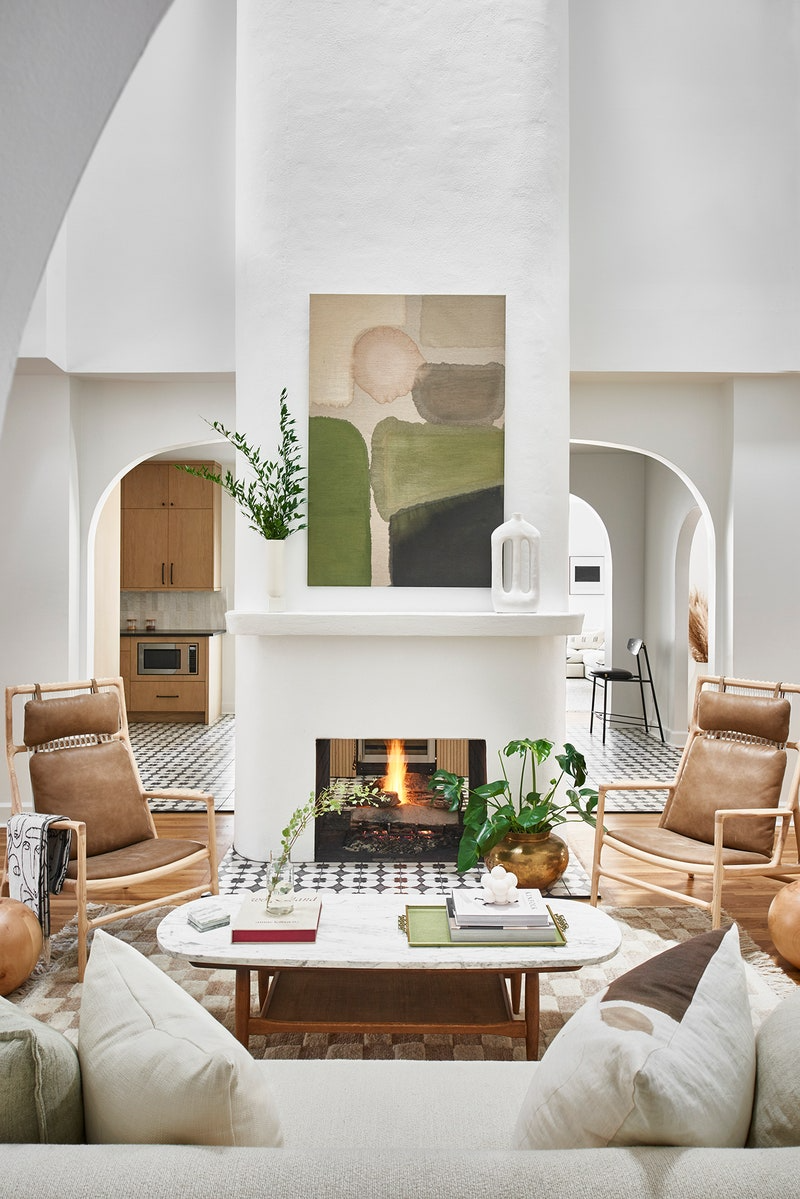
Accentuate a fireplace
“The fireplace is typically a focal point of a room, so using statement art or a mirror is always a great option for above the mantel,” Eisenhart says. “From there, you can layer on additional accents to create dimension.” These might include a vase and sculptural piece, as seen in the living room above, designed by Eisenhart.
As for the statement art, designer Samantha Stathis Lynch of Samantha Ware Designs in Hoboken, New Jersey, says, “Abstract art has the ability to elevate and transform a space by infusing it with vibrant energy, distinctive texture, and bold color.” For abstract art that won’t break the bank, she recommends looking to Marshalls or TJ Maxx, where you can find a variety of unique pieces that can be swapped in and out from season to season.
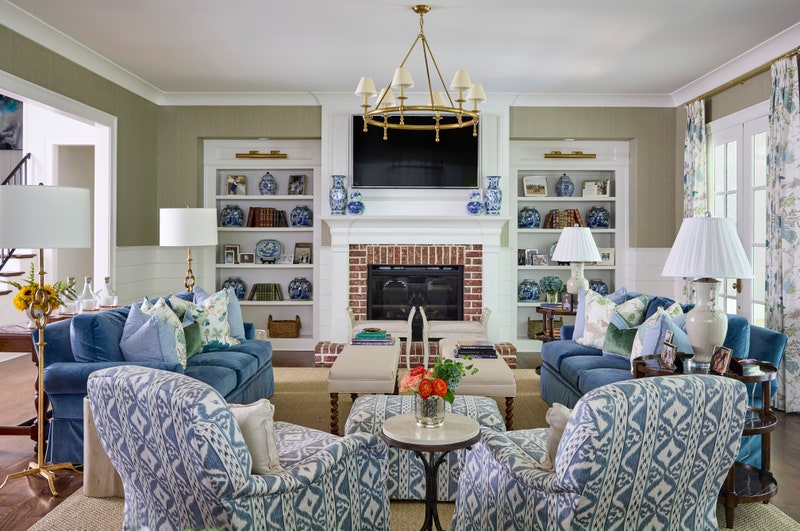
Be intentional about bookshelf styling
As Griffin says, “Living room walls should have a balance of art pieces.” So treat bookcases like your personal gallery space and display ceramics, blown glass, miniature paintings on stands, or other decorative items to balance out large wall decor on opposite walls. Of course books can double as decor too, especially if you group bindings in similar colors or turn any particularly interesting covers outward.
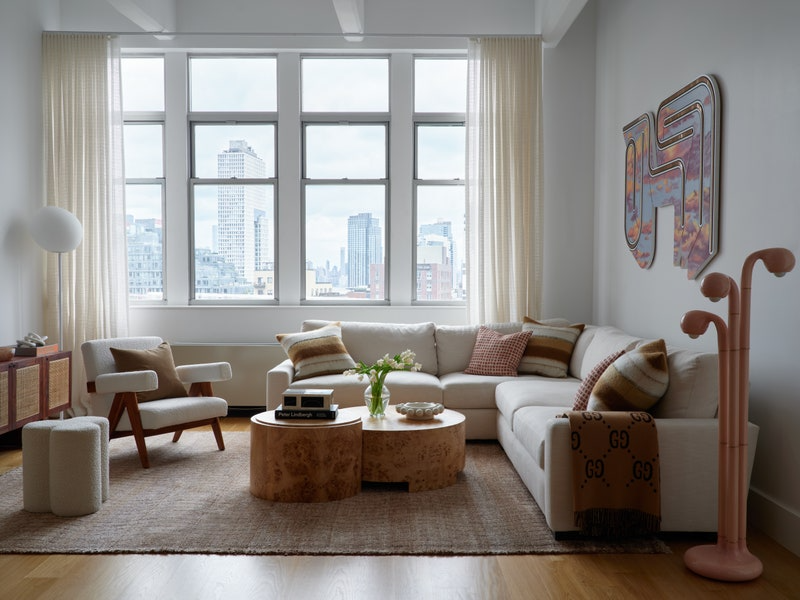
Complement a couch
“Consider a big statement art piece above the sofa,” Tract says. “It’s a great opportunity to highlight something unique and special.” In the living room above, designed by Tract, the curvature of the artwork echoes the rounded coffee table, ottoman, and lighting. While art can work in any room in the home, Tract points out that it’s especially great for high-traffic seating areas. “What better place to show off your collection than in one of the most beloved spaces for homeowners and their guests in the home.”

Add sconces for visual interest
According to Liz Williams of the Atlanta-based Liz Williams Interiors, a captivating piece of art is a solid start to living room decor, but adding a bit of hardware is the cherry on top. “Flanking fireplace art with sconces adds style and enhances the ambiance,” she says. It also adds dimension and potentially additional lighting, as is the case with the pair of candelabras in the living room above. Alternatively, Williams says you could go with brackets with vases or statuary.
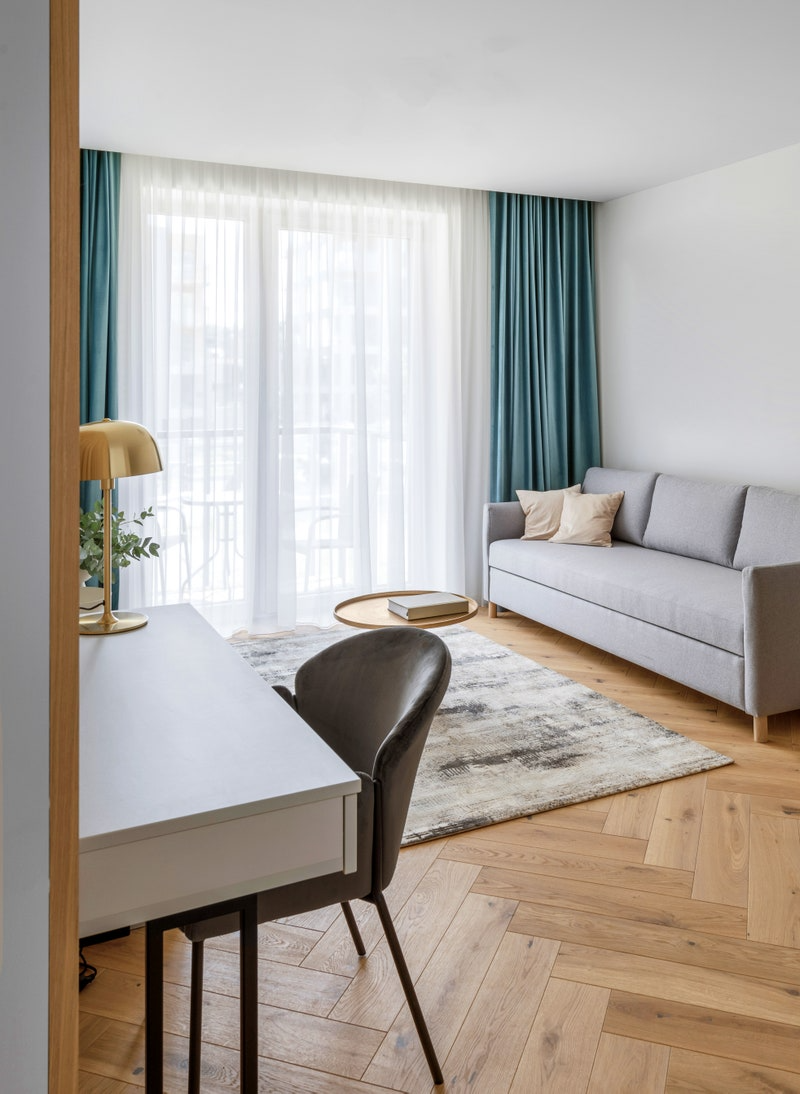
Choose window treatments that wow
Bold curtains not only block the light, they can also serve as large-scale wall decor. Try a playful pattern, like plaid or paisley, to bring a pop of personality to the room’s design. Or consider a floral print, which almost serves as a mural or work of art when closed. Worried that a pattern might clash with your furniture? Even solid drapes in a vibrant hue can spruce up an entire wall. Relying on window treatments to carry the decorative load can be especially practical in small living rooms where wall space is at a premium.
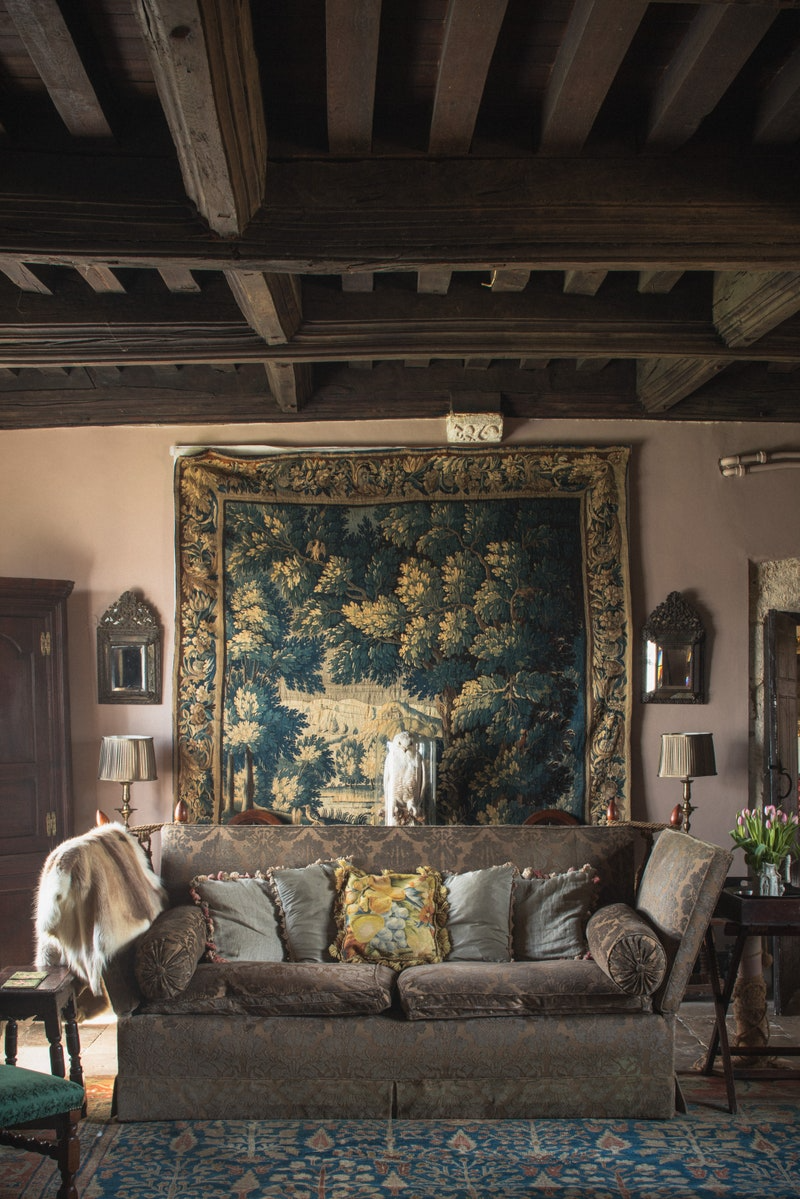
Hang a vintage tapestry
For a refined retro look—as in Medieval times retro—consider a tapestry. In addition to adding visual interest, tapestries cover large swaths of bare wall and add warmth to a room. The recently renovated living room above is inside Barnston Manor, a 13th-century house in England. Historic architecture specialists Spase, based in Dorchester, England, oversaw the project, paying special attention to the property’s existing charm. But you don’t have to have a medieval manor to go the tapestry route. Speaking about decor for any home, Eisenhart says, “Vintage tapestries are making a comeback in the design world. They are a great way to add texture to a wall.”
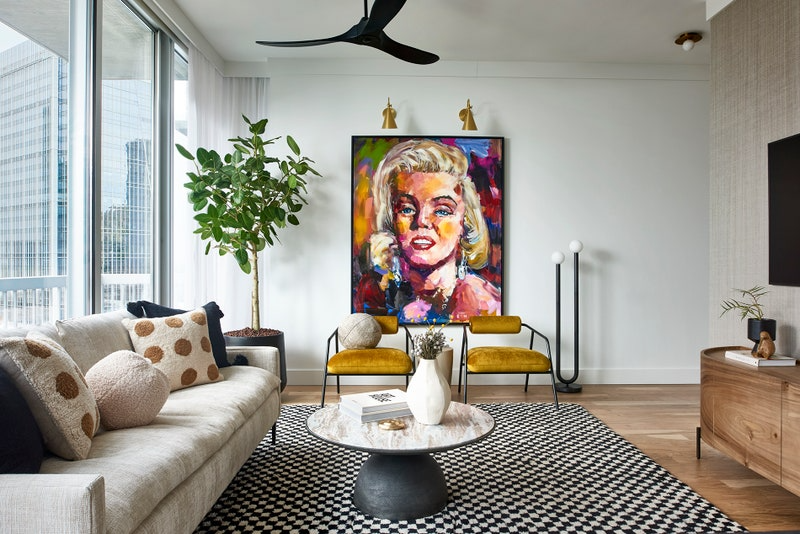
Stick to an accent wall
One statement piece is all it takes, according to Eisenhart. “There is no hard rule for decorating walls, but I prefer to pick a statement wall and avoid over-cluttering the space with art,” she says. Alberding agrees, pointing out that “it’s the perfect opportunity to introduce a bold color or pattern without overwhelming the entire space.” Beyond using an oversized portrait, as seen above, wallpaper, paint, and wood wall paneling are all ways to create an accent wall.

Have fun with felt
Here’s a renter-friendly alternative to a mural: Create bold wall art with felt tiles. These customizable designs, made by a company called Felt Right, can easily be reconfigured and removed thanks to temporary adhesive tabs (though the company does offer commercial-grade adhesives for long-term installations). Go with a predetermined pattern or design your own, choosing tile shapes, colors, and formations. As an added perk, the panels are sound dampening, which gives you greater license to enjoy movie night at full volume.
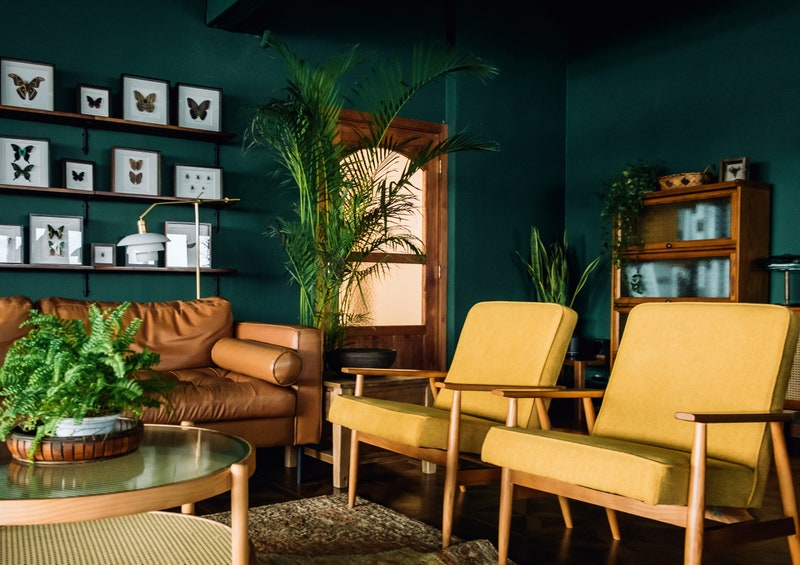
Curate an eye-catching gallery wall
“Create a gallery wall with a mix of photographs, art prints, and personal mementos,” Alberding says. “Vary the sizes and frames for an eclectic look.” Mementos might include framed menus from meaningful dining experiences (like an anniversary meal or a visit to a Michelin-starred restaurant), theater tickets or programs, and wall-mounted plates or woven baskets. Another idea: Streamline the look by sticking to one theme, such as botanical or nature-inspired prints, as seen above. And rather than hanging each item, place them on floating ledges so that you can easily swap in new items or do a full overhaul seasonally.